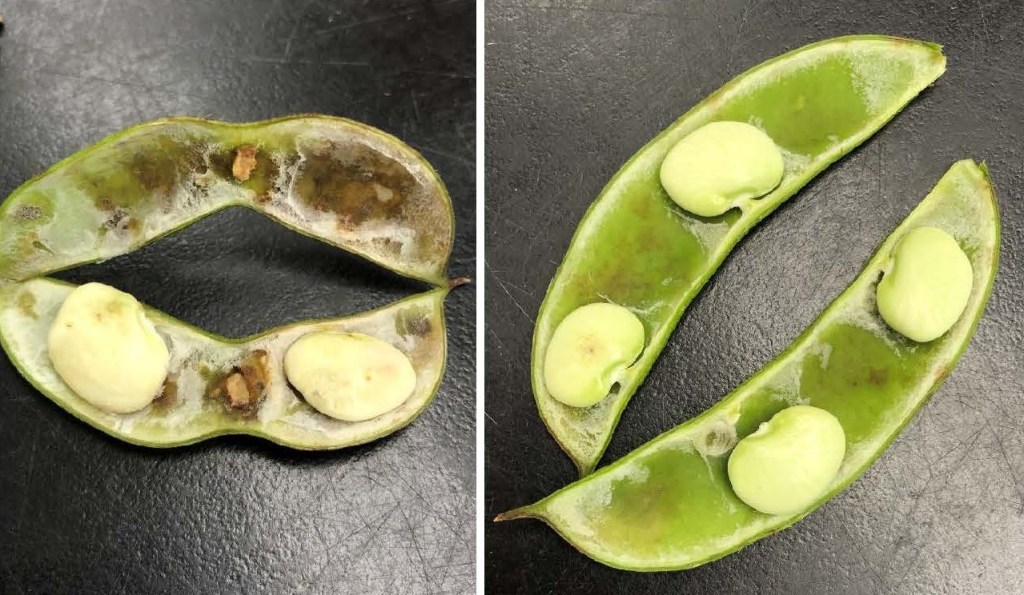From Clemson Plant Pathologist Tony Keinath, Clemson Plant Breeder Jenna Hershberger, and Clemson Extension Agent Bruce McLean.
Anthracnose on lima bean has been reported from the PeeDee area. Reddish brown blotches are found on leaves and pods. The disease appeared after a week of rain and, after another week of rain, quickly spread through the entire field to every plant.
The lima bean anthracnose fungus, Colletotrichum truncatum, produces typical Colletotrichum spores in round gooey masses with black hairs sticking out. The black hairs give the spore masses a black color. A hand lens is needed to see the individual spore masses. Spores are more commonly found on pods than on leaves.

The lima bean anthracnose fungus also infects seeds. Diseased seeds have discolored areas or small dots. In a pod with symptoms, one or more of the seeds can be diseased. Do not save seeds from pods with anthracnose. Saving any seed from a field with anthracnose symptoms is risky because the infected seeds can reintroduce the fungus when they are planted.

The fungus also survives in crop debris, probably two to three years. During the crop rotation period of two to three years, do not plant lima bean, snap bean, lentil, soybean, or peanut. Southern pea is not commonly affected. In addition, do not use sunnhemp (Crotalaria juncea) as a cover crop. The lima bean anthracnose fungus also has been reported in pepper, tomato, and eggplant fruit in Louisiana, North Carolina, and throughout Asia and Africa. Whether the local strains infect solanaceous fruits is unknown, but these fruiting vegetables also should not be planted before or after lima bean.
Fewer fungicides are registered on lima beans than on snap beans. Note that in Table 3-4 in the 2022 Southeast Vegetable Crop Handbook (pgs. 212-214), there is a separate section for lima bean fungicides. The recommended fungicide, azoxystrobin + propiconazole (FRAC 3 + 11), is sold as Quilt Xcel or Aframe Plus. Because it is a pre-mix, it does not need to be rotated, but only 3 applications can be made per crop, even if the lower rate is used. To protect pods from anthracnose, make the first application either when symptoms are seen on leaves before flowering or at flowering. To extend the spray program, rotate with a thiophanate-methyl (FRAC 1) product, such as Topsin M.
One response to “Anthracnose Identified on Lima Bean in the Pee Dee Region of South Carolina”
[…] Story and images courtesy The South Carolina Grower […]
LikeLike